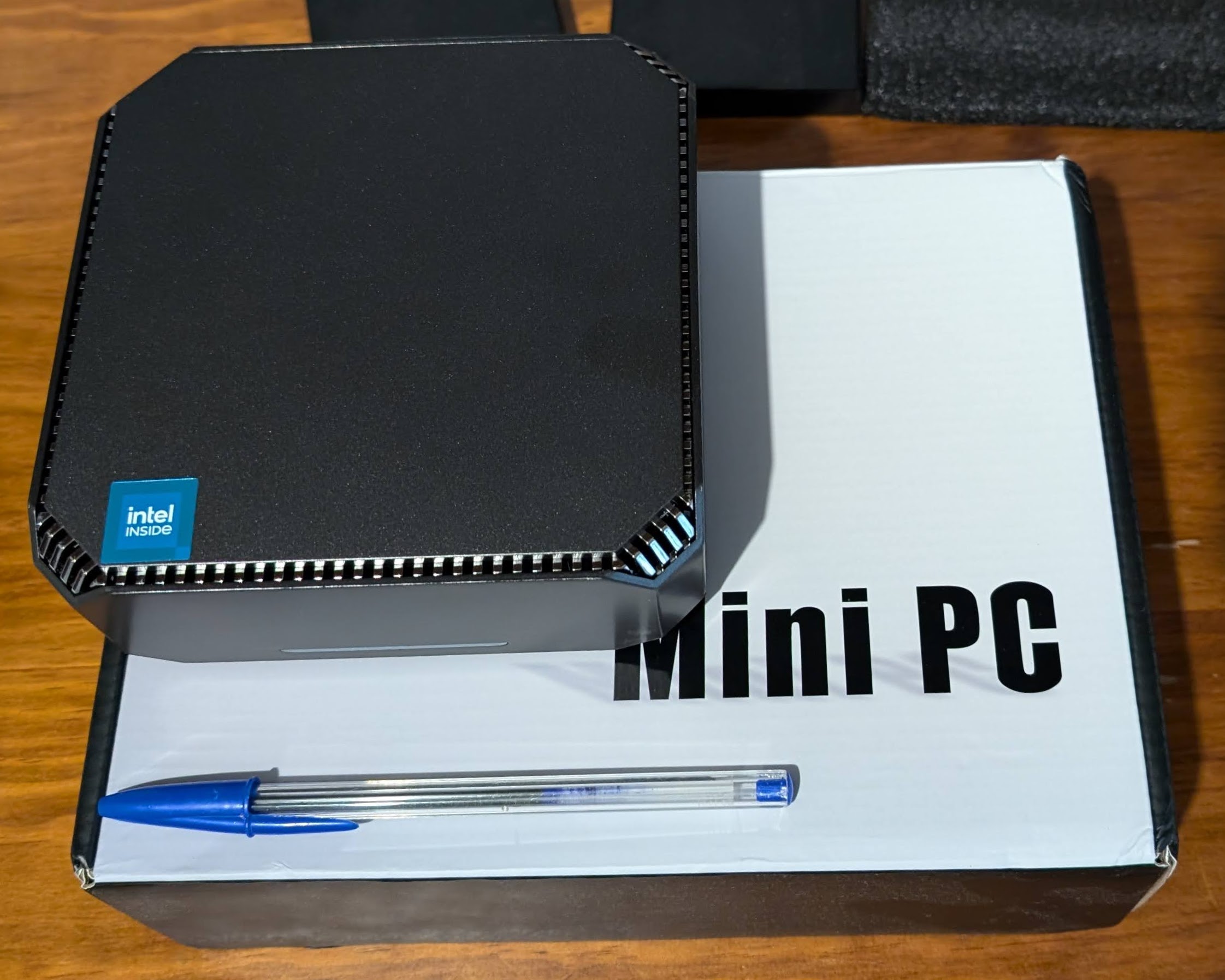SelfHosting Python AI Apps - My 2024 Favs
A recap on Python AI Apps that I have been working on during 2024.
The goal of this post is:
- To review some of the AI projects that are helpful on my workflow
- To learn how to use Caddy as NGINX/Traefik alternative to get HTTPs certificates
DNS challenge | Via PorkBun | Example 📌
AI Apps
- YT Summarizer
- https://github.com/JAlcocerT/phidata
- https://jalcocert.github.io/JAlcocerT/summarize-yt-videos/
- Get your Groq API for the app https://console.groq.com/keys
- https://github.com/JAlcocerT/Streamlit-MultiChat
- https://jalcocert.github.io/JAlcocerT/create-streamlit-chatgpt
- Get (at least) OpenAI API for this app - https://platform.openai.com/api-keys

And you will just need to:
- Get docker/podman installed
- Get the API’s
- [Optional] Install Portainer
graph LR
A[Get docker/podman installed]-->B{Get the APIs};
B-->C[Use the APIs];
B-->D[Optional: Install Portainer];This is the configuration file:
services:
streamlit-multichat:
image: ghcr.io/jalcocert/streamlit-multichat:v1.1
container_name: streamlit_multichat
volumes:
- ai_streamlit_multichat:/app
working_dir: /app
command: /bin/sh -c "\
mkdir -p /app/.streamlit && \
echo 'OPENAI_API_KEY = \"sk-proj-openaiAPIhere\"' > /app/.streamlit/secrets.toml && \
echo 'GROQ_API_KEY = \"gsk_groqAPIhere\"' >> /app/.streamlit/secrets.toml && \
echo 'ANTHROPIC_API_KEY = \"sk-ant-yourANTHROPICapihere\"' >> /app/.streamlit/secrets.toml && \
streamlit run Z_multichat.py"
ports:
- "8501:8501"
restart: always
environment:
MODEL_API_KEY: sk-proj-openaiAPIhere #https://platform.openai.com/api-keys
MODEL: gpt-4o-mini #gpt-4
TEMPERATURE: 0 #don't be creative
phidata_yt_groq:
image: ghcr.io/jalcocert/phidata:yt-groq
container_name: phidata_yt_groq
ports:
- "8502:8501"
environment:
- GROQ_API_KEY=your_api_key_here #https://console.groq.com/keys
command: tail -f /dev/null
restart: unless-stopped
streamlit-chat-pdfs:
image: ghcr.io/jalcocert/ask-multiple-pdfs:v1.0
container_name: chat_multiple_pdf
volumes:
- ai_chat_multiple_pdf:/app
working_dir: /app # Set the working directory to /app
command: /bin/sh -c "export OPENAI_API_KEY='your_api_key_here' && streamlit run appv3_pass.py"
ports:
- "8501:8501"
restart: unless-stopped
volumes:
ai_streamlit_multichat:
ai_chat_multiple_pdf:I have combined those into the AIssistant as different agents/tabs
How to Setup Caddy
Simplify Caddy configs with SSL, proxies, file servers, security headers, compression & more.
mkdir -p containers/caddy && touch containers/caddy/Caddyfile#https://gist.github.com/BlueHippoGithub/1a6b6569cea8520ea5b6119e8877c70a
version: '3.3'
networks:
caddy:
services:
phidata_service: #https://github.com/JAlcocerT/phidata/blob/main/Z_DeployMe/Docker-Compose.yml
image: ghcr.io/jalcocert/phidata:yt-groq #phidata:yt_summary_groq
container_name: phidata_yt_groq
ports:
- "8502:8501"
environment:
- GROQ_API_KEY=your_api_key_here # your_api_key_here!
command: tail -f /dev/null #streamlit run cookbook/llms/groq/video_summary/app.py
networks:
- caddy
# portainer:
# image: portainer/portainer-ce:latest
# container_name: portainer
# restart: unless-stopped
# security_opt:
# - no-new-privileges:true
# volumes:
# - /etc/localtime:/etc/localtime:ro
# - /var/run/docker.sock:/var/run/docker.sock:ro
# - /home/blue/containers/portainer/portainer-data:/data
# networks:
# - caddy
# ports:
# - 9000:9000
caddy:
image: caddy:latest
restart: unless-stopped
container_name: caddy
ports:
- 80:80
- 443:443
volumes:
- /home/jalcocert/containers/caddy/Caddyfile:/etc/caddy/Caddyfile
- /home/jalcocert/containers/caddy/site:/srv
- /home/jalcocert/containers/caddy/caddy_data:/data
- /home/jalcocert/containers/caddy/caddy_config:/config
networks:
- caddy
volumes:
caddy_data:
external: true
caddy_config:HTTPS with Caddy
The caddyfile normally serves to create HTTPs with Let’s Encrypt and DNS Challenge.
See http challenge method vs DNS Challenge method
SelfHosting AI Apps with HTTPs
Conclusion
| Feature | Traefik | Nginx | Caddy |
|---|---|---|---|
| Ease of Use | High | Medium | High |
| Performance | Medium | High | Medium |
| Flexibility | High | High | Medium |
| Dynamic Configuration | Excellent | Requires more manual configuration | Supports some dynamic configuration |
| HTTPS Support | Good | Requires manual configuration | Excellent |
| Learning Curve | Medium | High | Low |
- Choose Traefik if: You prioritize automatic service discovery and a wide range of plugins.
- Choose Nginx if: You need maximum performance and flexibility, even if it means a steeper learning curve.
- Choose Caddy if: You value simplicity and ease of use, especially for HTTPS setup.
- Caddy Strengths:
- Simplicity: Known for its user-friendly configuration syntax, making it easier to learn and use compared to Nginx.
- Automatic HTTPS: Supports automatic HTTPS certificate acquisition and management, simplifying security setup.
- Plugins: Offers a growing ecosystem of plugins for various functionalities.
- Weaknesses:
- Performance: While generally performant, it may not match Nginx’s raw performance in very high-traffic scenarios.
- Maturity: While gaining popularity, it’s not as mature or widely used as Nginx.
I have tried Caddy with a OVH VPS Server with 2GB RAM.
Similar to the one in which I tried to deploy Wireguard (~300/1.88GB) RAM
ssh ubuntu@57.128.public.ipHTTPS Options for The MultiChat Project
FAQ
How to Install NGINX?
https://fossengineer.com/selfhosting-nginx-proxy-manager-docker/
Strengths:
- High Performance: Known for its exceptional performance and scalability, making it suitable for high-traffic environments.
- Flexibility: Highly configurable and customizable, allowing for fine-grained control over traffic routing and other aspects.
- Mature and Widely Used: A well-established and widely used reverse proxy with extensive community support and documentation.
Weaknesses:
- Steeper Learning Curve: Configuration can be more complex and require more technical expertise compared to Traefik or Caddy.
- Less Automatic: Requires more manual configuration compared to Traefik’s dynamic discovery.
More about Caddy Reverse Proxy 📌
How to set up a reverse proxy and automatically enable SSL using Caddy and Docker Compose.
Key Steps:
- Environment Setup:
- Create a directory and a Caddyfile for configuration.
- Use Docker Compose to manage containers, networks, and configurations.
- Define a Docker network for containers.
- Caddy Configuration:
- Configure the Caddyfile with email, domain, and reverse proxy settings.
- Enable SSL certificates using Let’s Encrypt.
- Network and DNS:
- Open necessary ports (80 and 443) on the network.
- Configure DNS with a wildcard host or specify each subdomain.
Benefits:
- Efficiently manage multiple containers/applications on a single domain.
- Automatically enable SSL certificates for secure connections.
- Flexible DNS configuration options (wildcard or specific subdomains).
